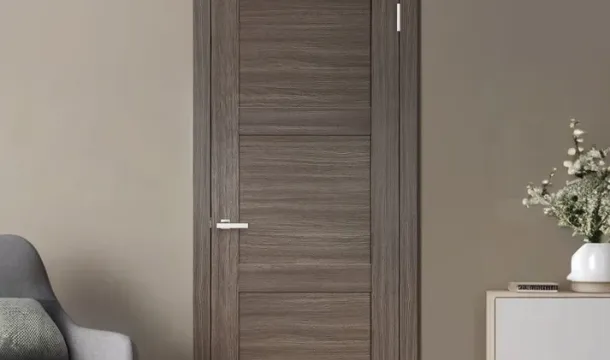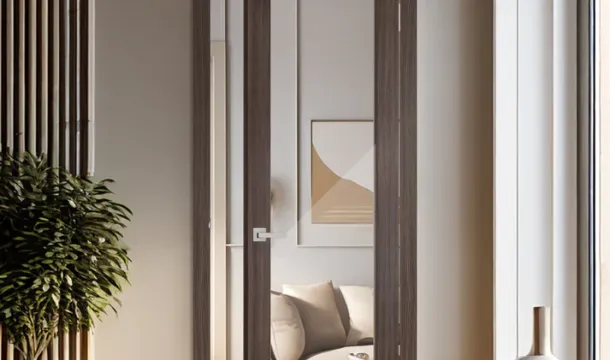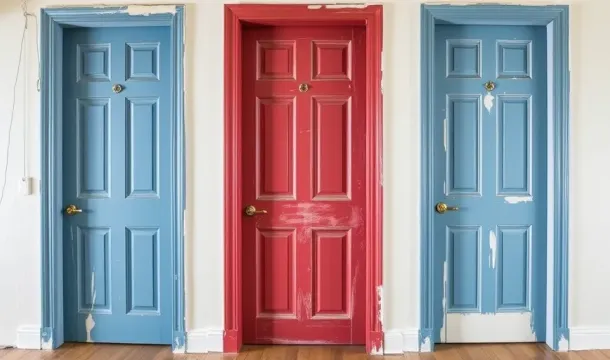Choosing the Right Interior Doors for Rental Properties
Popular Articles
- Choosing the Perfect Interior Doors for Your Canadian Home
- A Complete Guide to Choosing Interior Doors for Canadian Homes
- The Challenges of Painting Interior Doors
- Understanding Interior Doors and Their Role in Your Home
- The Perfect Blend of Reliability and Design: Interior Doors with Italian "Sandwich" Technology
Durability stands as the foremost quality when installing entryways in leased units. Opting for solid core models crafted from engineered wood or fiberglass can resist dents, scratches, and warping far better than hollow alternativessaving frequent replacement costs and reducing tenant complaints.
Sound insulation plays a pivotal role in maintaining privacy between rooms and minimizing noise transfer, which contributes directly to tenant comfort. Doors with medium-density fiberboard (MDF) cores combined with proper weatherstripping deliver measurable improvements in decibel reduction without excessive expense.
In climates like Canada's, moisture resistance is critical to avoid swelling or rotting. Fiberglass doors coated with UV-resistant finishes maintain appearance and function through seasonal temperature swings and humidity changes much more reliably than untreated wood options.
Durability and Maintenance Needs
Select solid core or engineered wood panels for enhanced durability in high-traffic environments. These materials resist dents and warping better than hollow-core alternatives, reducing long-term replacement costs. Opt for finishes like melamine or laminate, which provide scratch resistance and simplify cleaning without compromising appearance.
Metal frames combined with fiberglass surfaces offer excellent resistance to moisture and impact, ideal for units with variable humidity levels or tenant turnover. Avoid natural wood without protective coatings, as it demands frequent refinishing to maintain structural integrity and aesthetic appeal.
Maintenance routines should focus on regular inspection of hinges and locks to prevent operational issues that often lead to costly repairs. Use mild detergents for surface cleaning; abrasive chemicals can degrade protective layers quickly. In addition, consider doors with replaceable hardware components to extend functional lifespan without full door replacement.
Investing in weatherstripping or seals not only improves energy efficiency but also protects edges from swelling due to moisture exposure. For properties in colder climates, this small addition minimizes maintenance caused by seasonal expansion and contraction.
Cost Considerations for Rentals
Selecting entryway panels with a balanced price-to-longevity ratio reduces long-term expenses. Hollow core models typically start around $50-$80, making them budget-friendly but less durable. Solid wood or solid core alternatives range from $150 to $300, offering enhanced durability that minimizes replacement frequency.
Installation fees vary widely; expect professional labor costs between $100 and $250 per door, depending on complexity and region. Pre-hung units simplify fitting and can lower overall installation time, offsetting initial purchase premiums.
Maintenance expenditures should factor into upfront budgeting. Materials resistant to dents and moisturesuch as fiberglass or steel-faced doorsmay carry higher initial costs ($200-$400) but drastically reduce upkeep spending over multiple tenancy turnovers.
For multi-unit dwellings, bulk purchasing often unlocks discounts of 10-20%, improving cost-efficiency without sacrificing durability standards. Prioritize finishes that do not require frequent repainting or refinishing; factory-applied veneers tend to be more resilient than onsite treatments.
Consider lifecycle cost analysis rather than just sticker price: investing in sturdy frames and hardware decreases repair calls and tenant complaints, ultimately protecting rental income streams.
Noise Reduction Options
Solid core models outperform hollow alternatives in minimizing sound transmission, offering increased durability alongside acoustic benefits. Opt for doors with a minimum thickness of 1 3/8 inches, as thicker panels provide superior noise dampening.
Incorporating soundproofing seals around the frame dramatically decreases gaps where sound can escape. Acoustic door sweeps and perimeter gaskets made from neoprene or silicone enhance airtightness, reducing airborne noise by up to 20 decibels.
- Mass-Loaded Vinyl (MLV): Adding an MLV layer inside door cavities can boost sound insulation without compromising structural integrity or durability.
- Laminated Glass Inserts: For doors with glass components, laminated or double-pane glass reduces noise infiltration compared to single-pane options.
- Automatic Door Bottoms: These devices seal the gap at the threshold automatically when the door closes, improving sound isolation especially in high-traffic rental units.
Consider fire-rated doors that combine robustness with enhanced acoustic qualities; many models include built-in cores designed to absorb sound while maintaining resistance to wear and tear typical in rental environments.
Installation precision influences noise control effectiveness significantly. Ensure tight fitting frames and professional alignment to prevent air leaks that degrade performance despite durable door construction.
Style Impact on Tenant Appeal
Selecting a door style that aligns with the overall design of a rental unit significantly enhances tenant satisfaction and retention. Contemporary flush or slab doors with clean lines suit modern apartments, creating a sleek, minimalistic atmosphere that appeals to young professionals. In contrast, paneled doors with subtle molding details add character to traditional or vintage-style homes, attracting tenants who appreciate classic aesthetics.
Glass inserts in doors can brighten spaces by allowing natural light flow between rooms without compromising privacy when frosted or textured glass is used. This feature often increases perceived space and comfort, elevating tenant experience without sacrificing durability.
Matching Door Style to Target Demographic
For family-oriented rentals, sturdy shaker-style doors offer both timeless appeal and resilience under frequent use. Their simple yet refined design withstands wear while maintaining visual interest. Single-panel barn doors create unique focal points in lofts or creative spaces but require robust hardware to ensure longevity under daily operation.
Color and Finish Considerations
Neutral paint finishes like soft whites, grays, or muted earth tones integrate seamlessly into various decor styles and simplify touch-ups between tenants. High-quality finishes also protect surfaces from scratches and dents, enhancing overall durability. Wood veneer options provide warmth and texture but demand maintenance to preserve appearance over time.
In summary, aligning door style with the property's architectural theme and tenant profile directly influences appeal without compromising functionality or long-term durability.
Popular Articles
- Choosing the Perfect Interior Doors for Your Canadian Home
- A Complete Guide to Choosing Interior Doors for Canadian Homes
- The Challenges of Painting Interior Doors
- Understanding Interior Doors and Their Role in Your Home
- The Perfect Blend of Reliability and Design: Interior Doors with Italian "Sandwich" Technology

Choosing the Perfect Interior Doors for Your Canadian Home

A Complete Guide to Choosing Interior Doors for Canadian Homes
